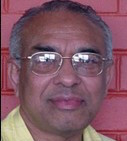A Brief Colonial History Of Ceylon(SriLanka)
Sri Lanka: One Island Two Nations
A Brief Colonial History Of Ceylon(SriLanka)
Sri Lanka: One Island Two Nations
(Full Story)
Search This Blog
Back to 500BC.
==========================
Thiranjala Weerasinghe sj.- One Island Two Nations
?????????????????????????????????????????????????Tuesday, September 5, 2017
The SAITM Issue & The Big Picture
 The controversy over the South Asian Institute of Technology and Medicine (SAITM)
has been prolonging for some time without an end in sight. While the
government is unwilling to budge an inch from its stand in allowing the
institute to operate as a private medical university the opponents on
the other hand are bent on disrupting its smooth operation. Unavoidably
the security cost of safeguarding the institute is rising.
The controversy over the South Asian Institute of Technology and Medicine (SAITM)
has been prolonging for some time without an end in sight. While the
government is unwilling to budge an inch from its stand in allowing the
institute to operate as a private medical university the opponents on
the other hand are bent on disrupting its smooth operation. Unavoidably
the security cost of safeguarding the institute is rising.
By
narrowing their protest over this particular institution the protesters
are ignoring the bigger picture regarding the future of higher
education in Sri Lanka. Under the neoliberal economic model that is
being dictated by the IMF and
its guardians the government’s role in providing quality higher
education to those with the necessary minimum qualification to receive
it, and quality healthcare to all those who need it are measured in
terms of the so called market based economic concept of the rate of
return. According to this measure the private rate of return exceeds
private cost as the level of education rises from primary to secondary
and to tertiary stages. Therefore, a sensible policy for the government,
according to establishment economic pundits, is to maximise its role at
the primary level and gradually reduce it as the level of education
rises. The social cost and social benefits of higher education are
shelved in this measurement partly because of the difficulties in
measuring them in monetary values and partly because it unnecessarily
complicates economic policy making for simple minded politicians.
Since
the end of the Second World War and with the entry of the Welfare State
based partly on Keynesian economic theory the public sector in both
developed and developing countries invested heavily on education,
healthcare, food production and infrastructural development. To a war
ravaged Europe and to many poverty-stricken developing nations at that
time this investment brought immeasurable benefits. Sri Lanka became one
of the shining leaders in Asia in providing public welfare. That the
country had a healthy economic surplus at that time made it easier to
operate a generous welfare state. Today’s senior bureaucrats, academics
and other professionals in the country, not to mention their compatriots
living as expatriates, would not have risen to their current status if
not for that all round welfare policy. Domestically,
that policy ultimately went a long way in bridging significantly the
gap between the rich and poor in Sri Lanka. Sri Lanka’s development
became an envy even to Singapore’s Lee Kwan Yew.
With
the ushering in of JR’s open economy after 1977 and the re-entry of the
free market the welfare state of Sri Lanka was radically rolled back. Economic
advisors from the IMF in cohort with foreign trained local market
oriented economists convinced the politicians that budget allocations on
health, education and food subsidies are a drain on the cash tight
economy and encouraged local legislators to allow the free market to
take care of those sectors. Accordingly, public hospitals, public
schools and universities were starved of funds and facilities, which
obviously affected the standard of their products. Market oriented
economics and its IMF manager still want the government to invest in
infrastructure development because such investment subsidises the
private sector partly with public funds raised through taxes paid by the
middle and poorer classes. Although the general discontent against this
state of affairs was growing for some time in Sri Lanka the people are
deliberately distracted by the ethnic and religious issues.
In
the meantime, the rich and the powerful began to look elsewhere to get
value for their money on education and health. Private hospitals and
private educational institutions started mushrooming to cater to their
demand.
While
private hospitals satisfied the medical needs of the rich and while
private primary and secondary schools taught the affluent kids public
hospitals and public educational institutions became asylums to the poor
reflecting the widening cleavage between the have nots and have lots.
Even doctors who are the products of public universities and working in
public hospitals cut short their time spent in those hospitals and spend
long hours privately charging exorbitant fees from the desperate poor.
It is a pathetic sight overall which has made the medical profession a
lucrative field for educators and practitioners. SAITM is the first
entrant to provide private university and professional education in the
country in a very profitable area. It is testing the waters before
expanding into other fields. The government is sitting tight until the
clamour and hoo-ha against SAITM dies down so that it will open the
field to other such private entrants in engineering, accounting, law and
other professional disciplines.


